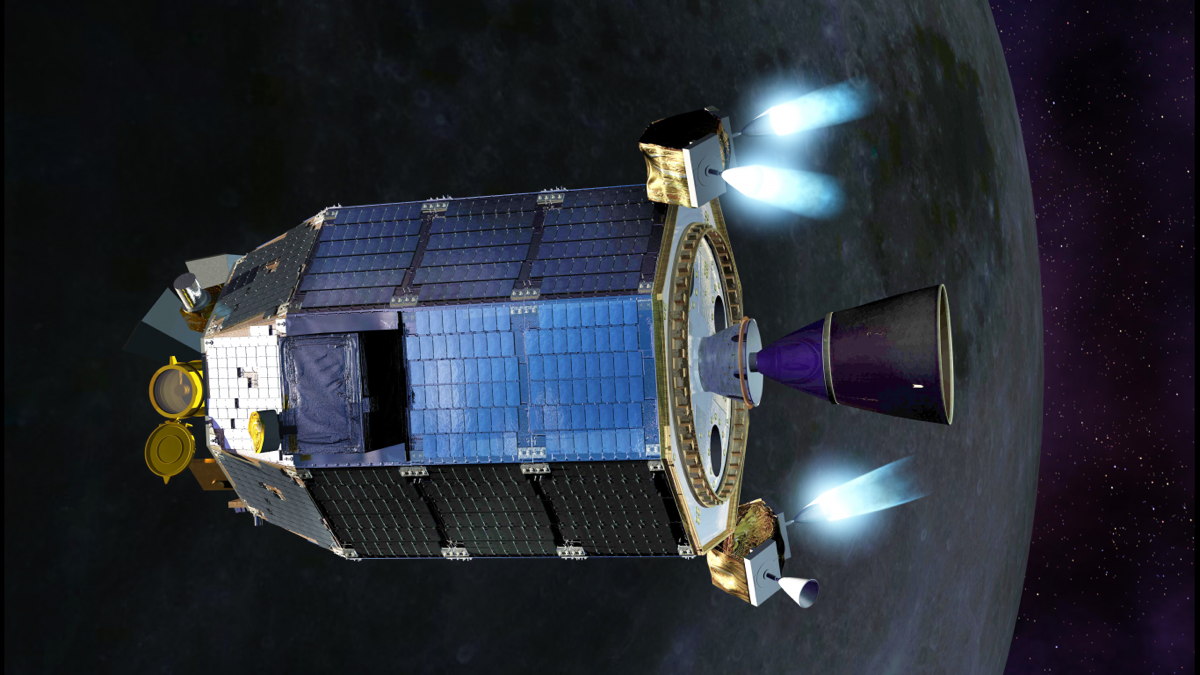NASA Moon Probe Performs 1st Big Maneuver of Lunar Trek

Friday the 13th is a lucky day for NASA's newest moon probe.
Today (Sept. 13), NASA's Lunar Atmosphere and Dust Environment Explorer (LADEE) spacecraft performed the first of three major burns expected to send the probe into orbit around the moon.
LADEE (pronounced "laddie") executed the burn at 12:38 p.m. EDT (1600 GMT) when it was at its closest point to Earth in its elliptical orbit. NASA officials report that the burn went well and the loveseat-sized spacecraft is functioning normally.
"We have successfully completed the Perigee Maneuver main engine burn," NASA officials wrote in a mission update. "Flight Dynamics preliminarily reports that it was a good burn, and will confirm later in the orbit through ranging … The spacecraft also successfully went through its first eclipse, and operated as expected."
LADEE now needs to perform two more of these burns that will send the probe into ever-higher orbits around the Earth before the Oct. 6 burn that will insert the spacecraft into lunar orbit.
Once in orbit around the moon, the $280 million LADEE mission is tasked with studying the moon's thin atmosphere and the mysteries of lunar dust. Depending on how much fuel remains on the spacecraft after its burns, the probe is expected to perform about 100 days of science before crashing into the surface of Earth's celestial neighbor.
The moon's atmosphere is actually representative of the most common kind of atmosphere in the known solar system, NASA officials have said. By understanding more about the lunar atmosphere, scientists might be able to glean more information about the atmospheres that surround Mercury, moons orbiting other planets, and even some large asteroids.
Get the Space.com Newsletter
Breaking space news, the latest updates on rocket launches, skywatching events and more!
LADEE launched into space atop the maiden voyage of the Minotaur V rocket from NASA's Wallops Flight Facility on Wallops Island, Va., on Sept. 6. The nighttime launch was flawless and could be seen up and down the east coast of the United States.
Follow Miriam Kramer @mirikramer and Google+. Follow us @Spacedotcom, Facebook and Google+. Original article on SPACE.com.
Join our Space Forums to keep talking space on the latest missions, night sky and more! And if you have a news tip, correction or comment, let us know at: community@space.com.

Miriam Kramer joined Space.com as a Staff Writer in December 2012. Since then, she has floated in weightlessness on a zero-gravity flight, felt the pull of 4-Gs in a trainer aircraft and watched rockets soar into space from Florida and Virginia. She also served as Space.com's lead space entertainment reporter, and enjoys all aspects of space news, astronomy and commercial spaceflight. Miriam has also presented space stories during live interviews with Fox News and other TV and radio outlets. She originally hails from Knoxville, Tennessee where she and her family would take trips to dark spots on the outskirts of town to watch meteor showers every year. She loves to travel and one day hopes to see the northern lights in person. Miriam is currently a space reporter with Axios, writing the Axios Space newsletter. You can follow Miriam on Twitter.









